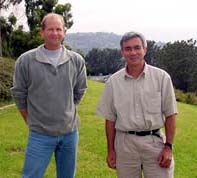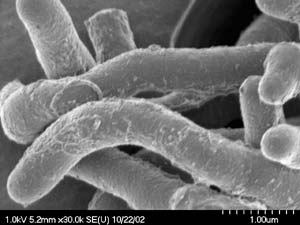This complex theme deals primarily with interactions between organisms and the environmental factors that impact them, but to a greater extent between individual inanimate environmental factors.
innovations-report offers informative reports and articles on topics such as climate protection, landscape conservation, ecological systems, wildlife and nature parks and ecosystem efficiency and balance.

Loss and deterioraton of indigenous habitat increasingly affect natural populations worldwide. As a result of these processes, new selection pressures are imposed upon organisms, increasing local extinction rates. Simultaneously, reduced movement among remnant patches lowers colonisation rates and affects demographic and genetic population parameters. Yet, organisms with comparable life histories often respond to habitat disturbance in various ways. Why so is a matter of great importance to evolution

Study, which shows microscopic plants keep planet warm, offers new considerations for iron fertilization efforts in the oceans
The ecological importance of phytoplankton, microscopic plants that free-float through the world’s oceans, is well known. Among their key roles, the one-celled organisms are the major source of sustenance for animal life in the seas.
Now, in a new study conducted by researchers at Scripps Institution of Oceanography at the University of California,

The movements of two gigantic Antarctic icebergs appear to have dramatically reduced the number of Emperor penguins living and breeding in a colony at Cape Crozier, according to two researchers who visited the site last month. The colony is one of the first ever visited by human beings early in the 20th century.
“It’s certain that the number of breeding birds is way down” from previous years, said Gerald Kooyman, a National Science Foundation-funded researcher at the Scripps Institution

2002 Outbreak May Claim 10,000 Harbor Seals
Scientists from Göteborg University in Sweden and the Woods Hole Oceanographic Institution (WHOI) report in an upcoming issue of the journal Ecology Letters that the 2002 outbreak of phocine distemper virus, or PDV, in European harbor seals may reduce the population by more than half and that future outbreaks with similar characteristics would significantly increase the risk of population declines. Their findings are the first epidemiol

NASA scientists using satellite data have shown that shifts in rainfall patterns from one of the strongest El Niño events of the century in 1997 to a La Niña event in 2000 significantly changed vegetation patterns over Africa.
Assaf Anyamba and Compton Tucker of NASA’s Goddard Space Flight Center, Greenbelt Md., and Robert Mahoney of Global Science and Technology Inc (GST) analyzed satellite derived images of vegetation from 1997 to 2000. They noticed regions of above normal “greenness” ov

An environmentally friendly solution to one of the world’s most notorious chemical contamination problems may be a step closer to reality, reports a research team from Purdue University and the University of British Columbia.
The team has identified one of the key stumbling blocks that prevent microorganisms from decomposing PCBs (polychlorinated biphenyls), a persistent and potentially hazardous industrial chemical that has become nearly ubiquitous in the environment. While capi